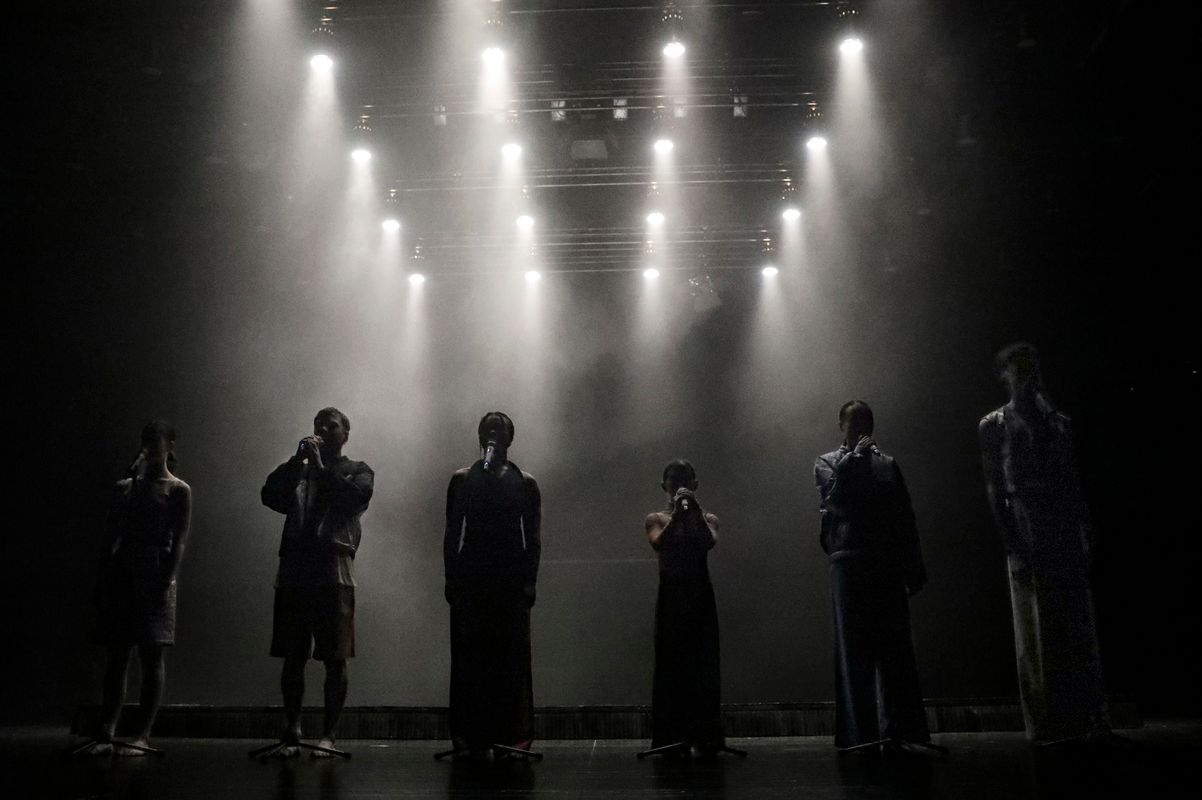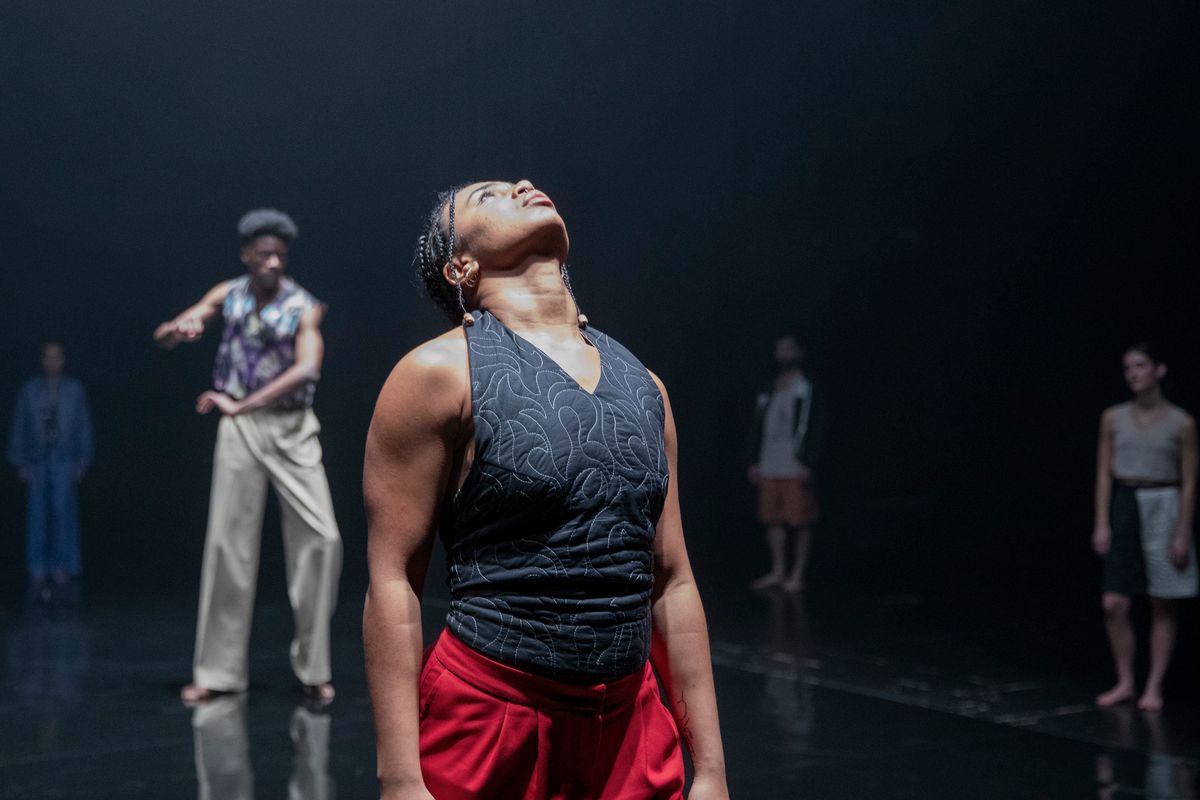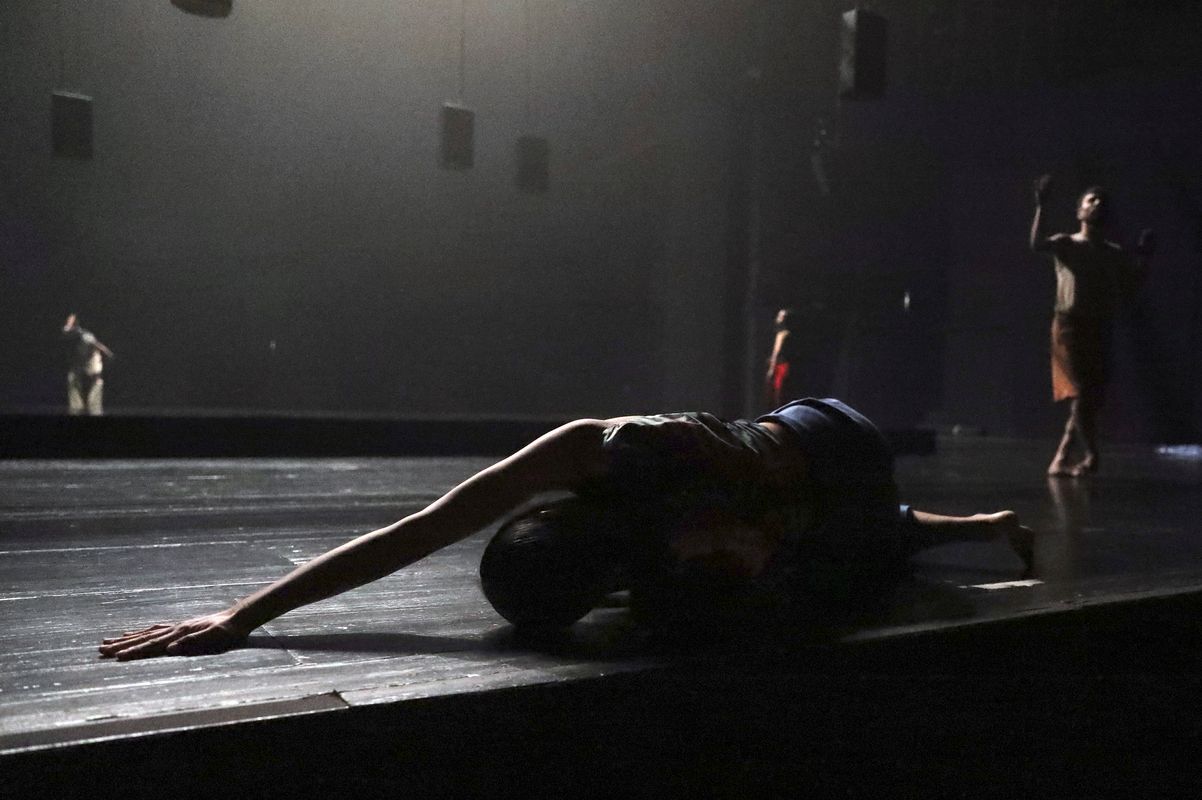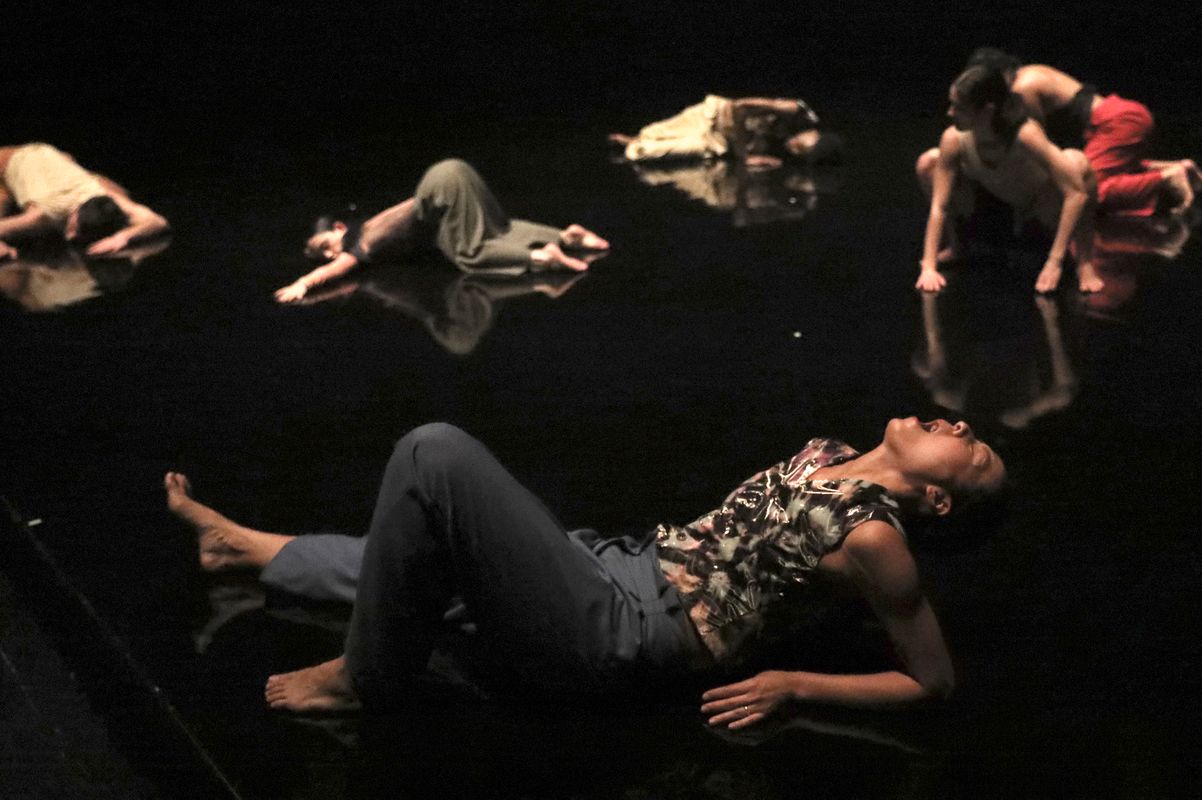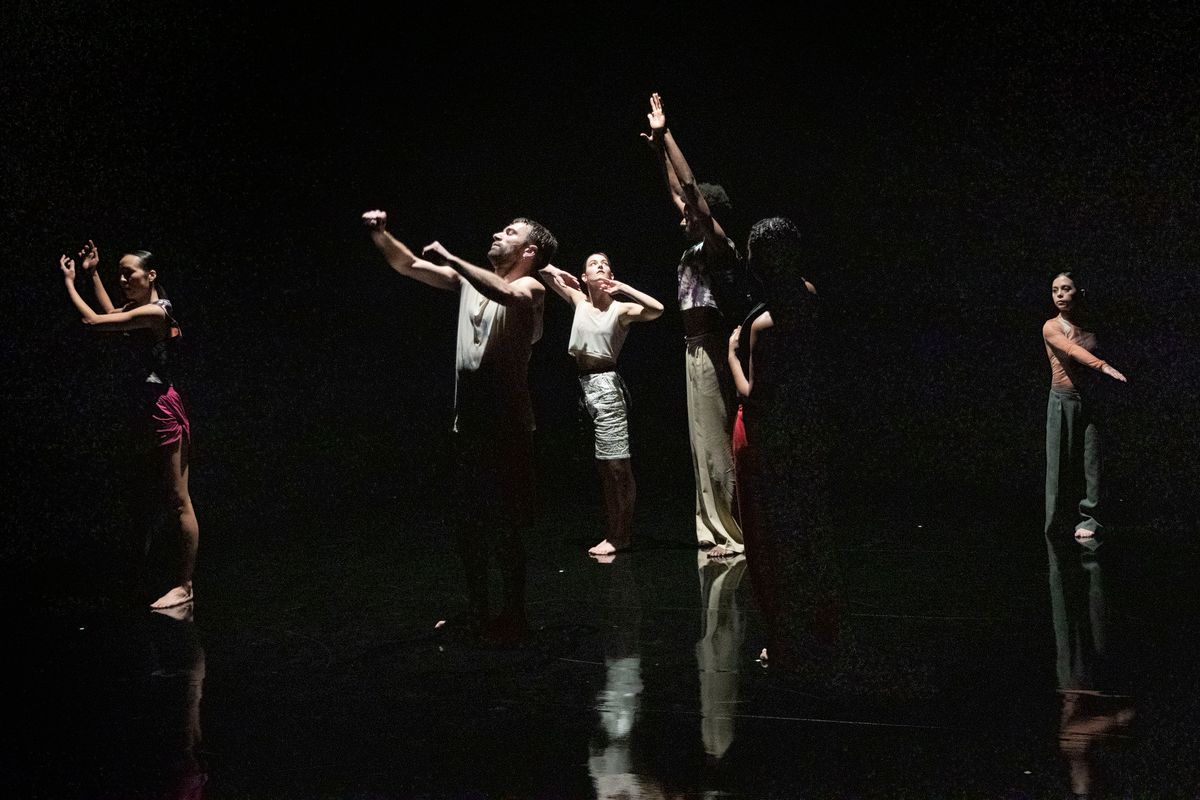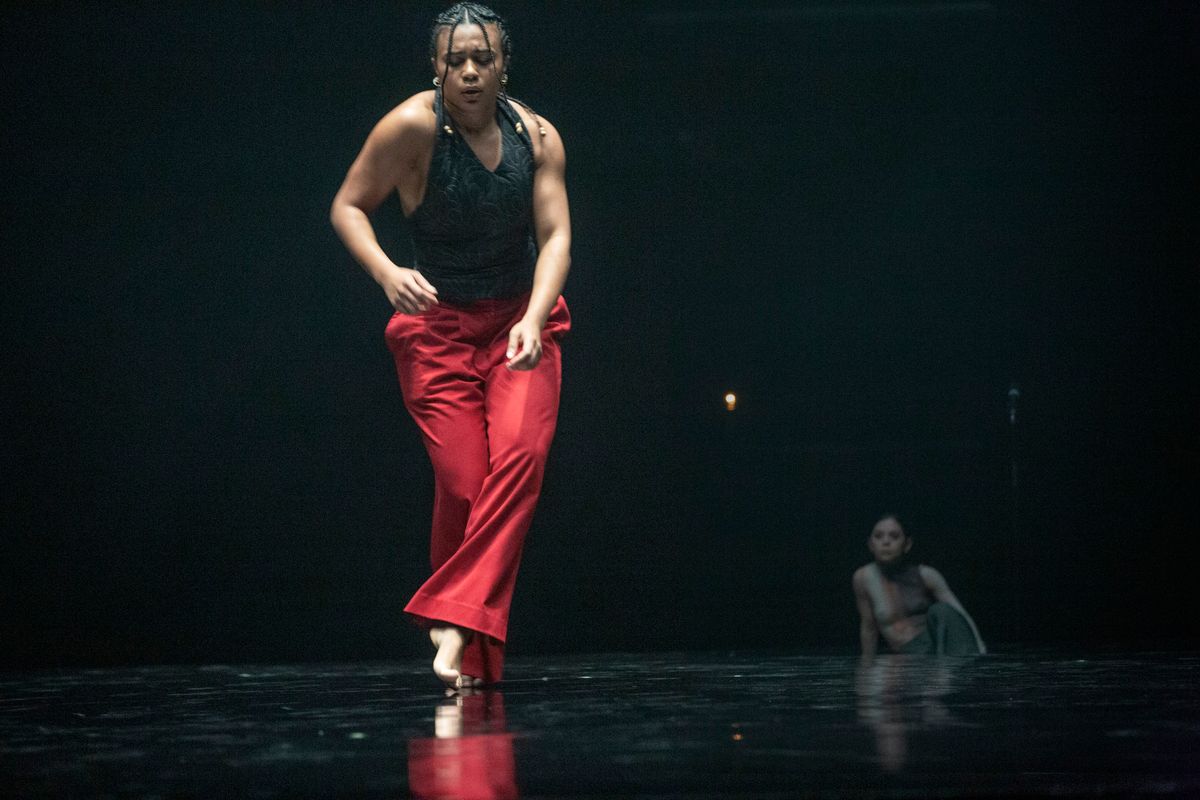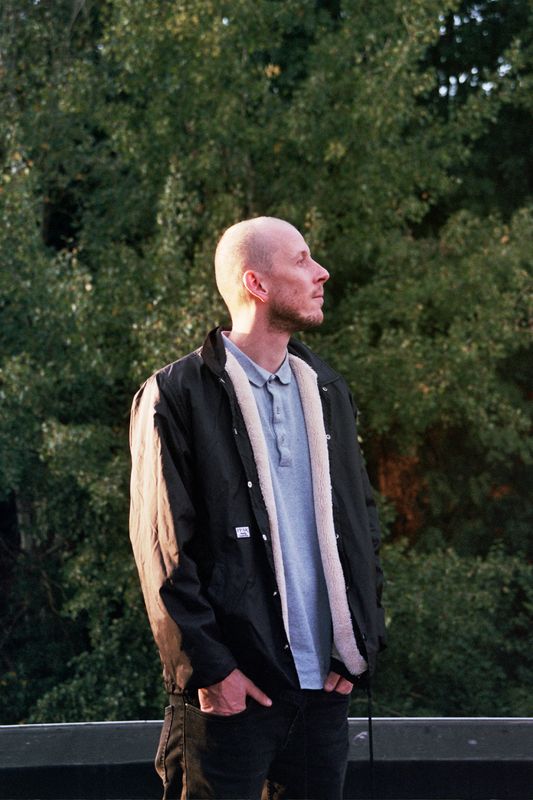
VOICE NOISE
-
6 nov20:00 - 21:35TR25 Schouwburg, RotterdamGrote zaal
English
'Redundant.' Or more bluntly: 'Irritating noise.' This is how the voice of the woman has often been considered from ancient Greek times to today.
VOICE NOISE is inspired by Anne Carson's essay The Gender of Sound (1992), in which she exposes how patriarchal culture has sought to silence women by ideologically associating women's sound with monstrosity, disorder and death.
In VOICE NOISE, some innovative, unknown and/or forgotten women's voices from the past hundred years of music history are given a stage. By doing so, Jan Martens takes another step in his efforts to shape an alternative canon.
Six dancers respond to recordings in which the human voice can be heard in various guises: humming, soothing, shrieking, whispering, singing. Gradually, they discover their own voice.
After working with big groups in his recent productions – any attempt will end in crushed bodies and shattered bones and FUTUR PROCHE – Jan Martens returns to a production for a small ensemble of six dancers. He works with some dancers who have inspired him in the past (Steven Michel, Courtney May Robertson and Loeka Willems) and invites new faces (Sue-Yeon Youn, Elisha Mercelina and Mamadou Wagué).
Jan Martens’ obsessions with numbers, geometry and patterning meets the unique physical languages of these performers, and a new-found interest in dance itself emerges: in detail and subtlety, in redefining grace and elegance.
INSPIRATIONS & RESEARCH (Jan Martens)
“New work emerges out of previous creations. That is the case for VOICE NOISE.
In PASSING THE BECHDEL TEST (2018), ELISABETH GETS HER WAY (2021), and FUTUR PROCHE (2022), I have included texts, music, and compositions of artists that I consider not known, loved, or acknowledged enough.
Often in dance, one works with newly composed music specially created for the show, or one works with a grand master who is long gone, for example, Bach. But so much music has been written that is only performed once or a few times and then disappears from the radar forever. In this new work, I want to delve into music history and see if I can bring a variety of unknown voices to the foreground. This time I want to take 'voice' quite literally. The music score for this piece will consist solely of works in which the women’s voice takes a significant role.
Even when the roots of this performance will have a clear feminist undertone, I do think that the feminist message will not be on the surface this time, in contrast to previous work as PASSING THE BECHDEL TEST and any attempt will end in crushed bodies and shattered bones. The form of VOICE NOISE will be mainly that of an abstract dance work. It's going to be a piece about six singular dancers. The layering of all these different women’s voices should speak for itself.
Women’s singing voices have been very important to me since a young age. Gay men form a big part of the fanbase of women pop and experimental pop artists like Björk, Tori Amos, Madonna, Dua Lipa, Lady Gaga, Cher, Marianne Faithfull, Dolly Parton, Grace Jones, Nico, Lana Del Rey, … Psychotherapist Jeff Larsen attributes this phenomenon as follows: ‘We, as gay men, often see women pop stars – especially when the star is perceived to have had to fight or struggle for her dominance or longevity, like Madonna or Cher – with our own struggle for full acceptance regarding our sexuality.’
In terms of content, this work is in line with previous works, but the form is very different. Rhythm and exhaustion are less present. Instead, detail and subtlety take centre stage, a more sensory approach. There is also far more room for improvisation here. As such, the performance is an exercise for the dancers in listening, watching and reacting better, more deeply.
ABOUT The Gender of Sound BY ANNE CARSON

In her essay from 1995, ‘The Gender of Sound,’ Anne Carson writes about how the women’s voice, with its high-pitched sounds, loud shouting, or aimless conversation, has been considered redundant and/or disturbing for a long time. She gives examples of how women's voices have been conceived over time, from ancient Greece to modern female politicians like Margaret Thatcher who, no matter how much voice training they followed, were accused of having too shrill a voice. She writes: "Closing women's mouths was the object of a complex array of legislation and convention in preclassical and classical Greece, of which the core concept is Sophokles' blanket statement, "Silence is the kosmos (good order) of women." She also writes about the Greek virtue of sophrosyne, self-control, a virtue apparently found only in men. “The masculine virtue of sophrosyne or self-control aims (...) to dissociate the outside surface of a man from what is going on inside him. Man breaks continuity by interposing logos – whose most important censor is the rational articulation sound.” Women are allegedly unable to do this. Carson explains in her essay that the Greeks imagined the female genitals as a second mouth, a reflection of the first. The woman’s two ‘mouths’ were seen as open fissures which sound, blood, mucus and destruction made their way out of without self-control. While the treatment of the female voice is undoubtedly the theme of this essay, Carson also appears to ask broader questions about oppression in the final paragraph. “Lately, I have begun to question the Greek word sophrosyne. I wonder about this concept of self-control, and whether it really is, as the Greeks believed, an answer to most questions of human goodness and dilemmas of civility. I wonder if there might not be another idea of human order than repression …” I can therefore only agree with Norwegian essayist Ida Lødemel Tvedt when she writes: “I think Carson’s essay is only ostensibly, or at least only superficially, about gender. On a more important level, it is about what society is and can be. In that regard, she expresses some wonderful wishes. Among other things, she says she is looking for an ideal that is about something other than self-control and oppression.” (From: Een sleepnet in de marianentrog, Ida Lødemel Tvedt, Uitgeverij Atlas Contact, 2021) Whereas control, mastery and strictness have always been very important in my work to date, this performance has also become an exercise in letting go, in the search for liberation. While in some sequences the dancers still have to operate within a tight mathematical framework, as the performance progresses they can take more and more liberties, and improvisation becomes a manual for responding to the music and each other in the here and now.
Team
choreografie Jan Martens cocreatie en performance Elisha Mercelina, Steven Michel, Courtney May Robertson, Mamadou Wagué, Loeka Willems, Sue-Yeon Youn en/of Pierre Adrien Touret, Zora Westbroek muziek 13 muziekstukken gecreëerd/gezongen door vrouwen; volledige lijst beschikbaar op www.grip.house repetitor Zora Westbroek, Naomi Gibson lichtontwerp Jan Fedinger kostuumontwerper Sofie Durnez scenografie Joris van Oosterwijk geluidstechniek Vincent Philippart, Valentijn Weyn, Jo Heijens stemcoaching Ine Claes, Maxime Montjotin uitvoering kostuums en scenografie Théâtre de Liège stage Malick Cissé, Sien Wils artistiek advies Marc Vanrunxt, Rudi Meulemans en Femke Gyselinck trailer en teasers Stanislav Dobák grafische vormgeving Nick Mattan tourtechnici Elke Verachtert, Valentijn Weyn, Vincent Philippart productie GRIP Anneleen Hermans, Rudi Meulemans, Lize Meynaerts, Klaartje Oerlemans, Jennifer Piasecki, Sylvie Svanberg, Ruud Van Moorleghem, Nele Verreyken internationale spreiding A Propic – Line Rousseau, Marion Gauvent, Lara van Lookeren coproductie La Comédie de Clermont-Ferrand, Maison de la Danse de Lyon – Pôle européen de production, De Singel international arts center, Théâtre de Liège, Julidans Amsterdam, Le Manège - Scène Nationale de Reims, Romaeuropa festival, DDD – Festival Dias da Dança - Teatro Rivoli - Porto, Scène Nationale de Forbach, Charleroi danse - centre chorégraphique de Wallonie - Bruxelles, Festspielhaus St-Pölten, Tanzhaus nrw Düsseldorf, Théâtre de la Ville - Paris, Festival d’Automne à Paris, Équinoxe - Scène Nationale de Châteauroux, Theater Rotterdam, Perpodium residenties La Comédie de Clermont-Ferrand (FR), DE SINGEL (Antwerpen, BE), Charleroi danse - centre chorégraphique de Wallonie - Bruxelles (BE) met de financiële steun van de Vlaamse Overheid, de Taxshelter van de Belgische Federale Overheid via BNPPFFF




